- Thelonious Monk’s Harmony, Rhythm, and pianism (Part 3)
- Read Part 1 here and Part 2 here.
- Rhythm and Pianism
- Rhythm
- Pianism
- Analysis of Two Peers
- Find and download Thelonious Monk’s sheet music transcriptions in our Library.
- Thelonious Monk With John Coltrane (1961) (Full Album)
Thelonious Monk’s Harmony, Rhythm, and pianism (Part 3)
Read Part 1 here and Part 2 here.
Rhythm and Pianism
Rhythm
The rhythmic traits for which jazz is known and at which it excels—groove, swing, speed, heat, cool, polyrhythm, conversational interaction among players, dense and irregular improvised motives and phrases, antiphonal call and response, and more—are all but absent in ISC. Most modern jazz group performance emphasizes strict periodicity with terrific forward momentum created by players’ rhythmically propulsive contributions. Formidable mastery, poise, and virtuosity are needed to play.
Tempi are characteristically either fast enough to scare off would-be pretenders, or, just as daringly, cooled off to an unruffled “ballad” speed, and steady in either case. The metric backbone is the succession of harmonies with the beat usually actualized and propelled by the walking quarter notes of the bass and the drums’ “ride” cymbal. Though harmonies change on measure downbeats and sometimes middles, the beats in between—beats and in a four-beat measure—are stressed to create a driving backbeat.
Solo performances and recordings are almost exclusively the provenance of pianists, who could use the left hand to simulate the roles of the rhythm section, with either walking bass lines or the evocation of earlier styles such as stride or boogie-woogie. Monk himself made extensive use of these latter techniques on his own solo records, as well as on the unaccompanied numbers that were generally included in his live sets. Solo performers such as Art Tatum would also “extemporize,” straying from steady time in introductions, quasi-cadenzas, and so on. For Monk, though, a solo ballad like ISC was an opportunity to stretch time in a far more radical manner, eschewing steady time almost completely.
Swing, an idiomatic variation of the timing of the subdivided beat, depends on underlying regularity. It involves a dynamic relationship between measured periodicity and the realm of unmeasured music, rhythmic freedom that can be implied through soloists’ styles. This dynamism in turn references a melodic vernacular—the sense that a soloist is “speaking through their horn.” Some would argue that this has to do with the lyricism of the human voice, others that it represents some kind of middle ground between a discursive, rhetorical European way of making music and a more interactive, poly-rhythmic African approach. Others might say that both are true or that it simply feels good, and that, having been discovered and developed at the turn of the twentieth century, it proved irresistible.
Monk’s ISC can be said to swing only in the colloquial sense of being compellingly musical, that is, simply because he is saying something in a distinctive way. But strictly understood, swing can exist only against a conception of steady time, and in this recording nothing keeps time.
Except fleetingly in a few spots, it is impossible to move the body in any regular pulsation to Monk’s playing. He is clearly not keeping steady time internally—or else he has a very different clock. If we listen intently for the regularity most bodies crave—and which we expect from familiarity with more standard versions of the song—we must jolt in and out of time with him. The slow regular beat of the tune’s harmonic progression remains impassively present, a law both obeyed and mocked. Monk often played solo ballads in this manner, a meditation with outbursts, with an affect both reverent and ironic. In live performance with a group, this number would be surrounded by tunes that swung hard. In other words ISC’s rubato is heard—and is meant to be heard—in terms of the absence of jazz’s most authentic rhythmic traits, and of Monk’s abandonment of them in the service of other qualities.
Pianism
One of the most ergonomic inventions in human history, the piano and its eighty-eight-key action are among jazz’s essential European legacies. Its technology has empowered musical cultures as distant as Burmese and African American to adapt it to their own idioms, extending out from the panoply of European approaches to the instrument on completely unforeseen trajectories. Jazz piano’s trajectories crisscross and meld into a great tradition of their own.
No one gains entrance into the pantheon of jazz pianism without a strongly identifiable voice on the instrument. The differences among pianists are bread and butter to jazz lovers, from earlier era virtuosi like Jelly Roll Morton, James P. Johnson, Fats Waller, Earl Hines, and Art Tatum through beboppers like Bud Powell and Mary Lou Williams and on to a diversity of post-bop players far too numerous to cite or describe. But, as we have said, even among these names Monk comes in at a different angle due to a tightly bound combination of pianistic idiosyncrasies, harmony, and rhythm.
Yet we cannot properly appreciate these elements outside the context of what his peers developed for the instrument.
Keyboard concept, technique, and historical currents conspire to shape pianists’ approaches. All pianists have to consider multiple aesthetic issues determining what kinds of textures to favor in developing a style.
Individual tunes suggest their own approaches, but players develop idioms that carry over from tune to tune. Voicings can be played with from one to ten fingers—or sometimes, in Monk’s case, with flattened palms. Overall motion can be dense or sparse. The hands can be independent or interdependent. One can move freely around the entire keyboard or stay closer to its more conventional, “vocal” center. Nuances of touch, phrasing, and dynamic are essential.
Piano styles also group historically. The “orchestral” ways of playing that developed in jazz’s first few decades were strongly influenced by brass band marches and ragtime, and by the fact that before World War II jazz was primarily dance music. Pianists of those years tended to provide a clear beat and full harmonic support. Some, like bandleader Count Basie, favored economy of notes and texture. In contrast, there was nothing in piano technique or harmony that Art Tatum could not execute astonishingly, nor did he hesitate to infuse most everything he played with the encyclopedia of approaches at his disposal, in all kinds of combinations and throughout the entire range of the keyboard.
Bebop was for listening, not dancing, and its speed an excuse for cutting—that is, outplaying and stumping cohorts. The competition nudged piano technique to become lighter, fleeter, and sparser. The walking bass and drums safeguarded the time so pianists needed to do less in that regard, and the bass register was to some degree forsaken. Bud Powell’s style often rested on a chassis of insistent, rhythmically irregular, somewhat grating left-hand “shells” (the root of the chord played in the bass register, plus the seventh directly above it). Jutting from below, they cut in under single-line right-hand melodies that looped around the upper two-thirds of the keyboard, equaling Charlie Parker’s saxophone lines in their density and irregular phrasing.
In the 50s, jazz cooled off, tributaries of eclectic styles blossomed, and it became necessary to know how to play in many ways. Red Garland could imitate the fast-moving close harmonies of big band saxophone sections in passages featuring thick, parallel, two-handed chords moving with melodic gestures. Wynton Kelly emphasized idiomatic blues riffs. Influences of Cuban and Brazilian styles, and of modern European composition, gradually took root. But in the main, Powell’s saxophone-like approach to the right hand prevailed, while in the left hand many developed harmonically richer voicings, deployed somewhat like Powell’s shells.
Analysis of Two Peers
Compare figure 4.4’s transcriptions of the opening of I Should Care as played by Oscar Peterson and Bill Evans, two strikingly different but equally iconic pianists of the time. Peterson, stylistic and technical heir to Tatum, plays solo here with mid-range voicings of up to eight notes, some with left-hand shells, most containing all triad tones and the seventh. As mentioned earlier, he doubles the harmonic rhythm to quarter-note speed, which allows interpolation of tritone substitution dominants preparing the V and the I chords of mm. 1-2. The Eb7 at m. 1, beat 4 is voiced with a pungent #9 in addition to the seventh chord itself. Peterson exploits the hidden presence of an F# major triad within this sonority, playing it with the right hand to separate it from the Eb major triad
Figure 4.4a. Opening measures of Oscar Peterson’s version of I Should Care (transposed to D from the original key of Bb). From Soul-O!; Oscar Peterson, solo piano.
Figure 4.4b. Opening measures of Bill Evans’s version of I Should Care (transposed to D from the original key of C). From How My Heart Sings!; Bill Evans, piano, Chuck Israels, bass, and Paul Motian, drums.
Figure 4.4a and 4.4b
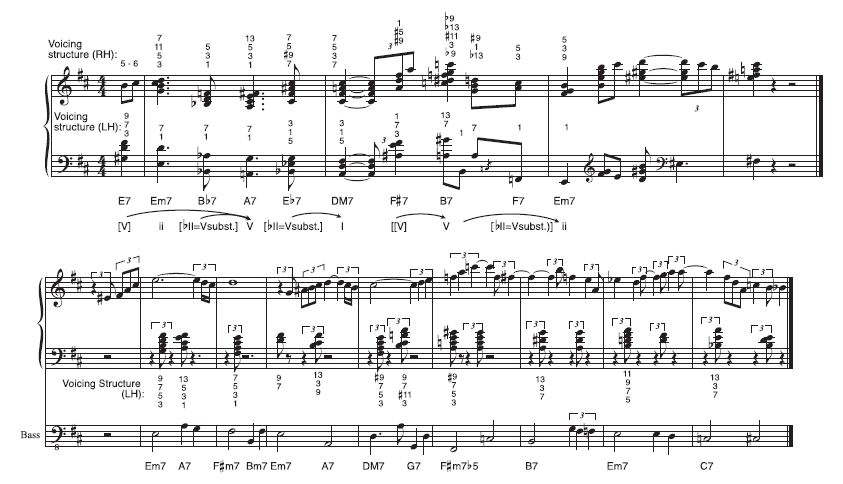
he places in the left. The left-hand triad then slides down in parallel motion to the downbeat of m. 2, but in the right the A# moves to A while the other tones remain in place. This reveals an F# minor triad comprising the third, fifth, and seventh of the DM7. The superpositions of triads and impeccable voice leading of this chord change are of a special richness in this region of the keyboard.
Shooting up in register, the F#7 chord on the second triplet eighth of m. 2, beat V is V of the B7 chord on beat 3, itself an applied V to the Em7 of m. 3. The F#7 is notable for its #9 (A) and the #5 (D), which is perhaps there only because Peterson has omitted the fifth of the chord (C# ; see also figure 4.3, middle column and second row under “Chromatic Tones”). On the next beat, where he brings the melody to a local peak, the fifth (F#) is again omitted, but both thirteenth (G#) and b thirteenth (G) are included. This B7, voiced with the root as an afterbeat, contains additional extension tones C and F that, combined with the others, conceal G# major, F major, C minor, and A diminished triads all at once. This sequence of lavish chords, texturally full and smooth, steady and propelled in rhythm and with a legato touch, give ISC sumptuous treatment.
Evans’s bass player Chuck Israels provides all the chord roots in metrically secure positions, so rather than double them or their rhythm, the pianist parries them with the left hand, playing deft offbeat rhythmic punches that converse polyrhythmically with the right hand’s intricate embellishment of the melody. Beyond this, however, Evan’s chord structures are similar to, albeit thinner than, Peterson’s. He remains in the piano’s central register, and he is equally fastidious about voice leading: the majority of the chord-to-chord connections proceed by step.
The elegantly contoured right-hand line begins by hugging the original tune, but transforms it completely after m. 4 (while still brushing the original C, B, and A in mm. 5-7). Evans sometimes uses melody to enrich the voicings, as when A–F# –D (thirteenth, #eleventh, ninth) is heard over the C7 chord in m. 8. He also gingerly clashes with them by using avoid tones, as with the F (#7) over the F#7b5 in m. 4, or the Eb similarly related to its Em7 harmony two measures later (see figure 4.3, left column and top row under “Chromatic Tones”). In both cases, though, Evans is careful to promptly lead by step to a more consonant resolution: the former moves up to F# at the end of the measure, while the latter goes directly down to D.
As we take up analysis of Monk’s ISC, we will find that features creating continuity in these two short excerpts—stepwise motion, propulsive rhythm, mid-range voicing, and a consistent level of density and dissonance—are missing. Monk did not by any means invent the notion of favoring discontinuities in these parameters. He did not come from nowhere, and it is well established that his style is part of a lineage extending from before Duke Ellington, through Monk, and on to later figures like avantgardist Cecil Taylor, not to mention the many who deliberately emulated Monk in recent decades. To hear those connections is a project for another time that would enable a crucial historical and stylistic narrative. But to frame Monk against the prevailing, more conventionally tasteful modern jazz aesthetics illustrated by figure 4.4 is to hear him at his most inimitable and strange.

Find and download Thelonious Monk’s sheet music transcriptions in our Library.
Thelonious Monk With John Coltrane (1961) (Full Album)
Browse in the Library:
| Artist or Composer / Score name | Cover | List of Contents |
|---|---|---|
| All Sondheim Vol IV Music and lyrics |
 |
All Sondheim Vol IV Music and lyrics |
| All That Jazz piano-vocal Arrangement |
 |
|
| All The Things You Are (Guitar And Tabs) | All The Things You Are (Guitar And Tabs) | |
| All The Things You Are (Guitar And Tabs) (Musescore File).mscz | ||
| All The Things You Are By Jerome Kern Guitar Transcription |
 |
|
| All The Things You Are Jerome Kern Oscar Hammerstein 2nd 1940 Jazz Standard (Vintage sheet music) |
 |
|
| All Time Standards (Songbook) Jazz Guitar Tablature Chord Melody Solos (Jeff Arnold) |
 |
All Time Standards (Songbook) Jazz Guitar Tablature Chord Melody Solos (Jeff Arnold) |
| All Time Standards Piano (Arr. Gabriel Bock) |
 |
All Time Standards Piano (Arr. Gabriel Bock) |
| All You Need Is Ears George Martin with Jeremy Hornsby 1979 (Book) The story o the recording genius who created The Beatles |
 |
|
| Allan Holdsworth Just for the curious book Guitar with Tablature |
 |
|
| Allan Holdsworth Melody Chords For Guitar |
 |
|
| Allan Holdsworth Super Guitarist with TABs |
 |
Allan Holdsworth Super Guitarist with TABs |
| Alle prese con una verde Milonga (Paolo Conte) | ||
| Allevi, Giovanni – Back To Life |
 |
|
| Allie Wrubel – Gone with the Wind |
 |
|
| Allman Brothers Guitar Songbook |
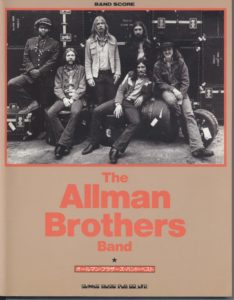 |
Allman Brothers Guitar Songbook |
| Allman Brothers, Best Of The (Piano, Vocal, Guitar) |
 |
Allman Brothers, Best Of The (Piano, Vocal, Guitar) |
| Allman Brothers, The – The Definitive Collection For Guitar Vol 1 with Tablature |
 |
Allman Brothers, The – The Definitive Collection For Guitar Vol 1 |
| Alma Redemptoris Mater |
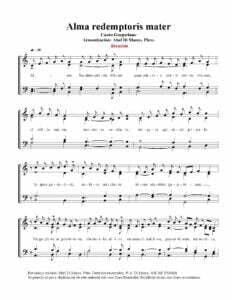 |
|
| Almeno tu nell’universo (Mia Martini) | ||
| Almir Chediak Ivan Lins Guitar Songbook Vol 2 |
 |
Ivan Lins Guitar Songbook Vol 1 by Almir Chediak |
| Alok – Hear Me Now Sheet Music |
 |
|
| Alone together (Howard Dietz & Arthur Schwartz) | Alone together (Howard Dietz Arthur SchwArtz) | |
| Alone Together (Musescore File).mscz | ||
| Alone Togheter Guitar Solo Transcription Jazz Standard |
 |
|
| Alphaville Forever Young (piano & Guitar) |
 |
Alphaville Forever Young (piano & Guitar) |
| Also Sprach Zarathustra Op. 30 – Richard Strauss (Musescore File).mscz | ||
| Alternative Rock Sheet Music Collection |
 |
Alternative Rock Sheet Music Collection |
| Always on my mind – Elvis Presley – easy arrangement for piano, with fingering |
 |
|
| Amadeus – W.A. Mozart (film score arr. for piano solo by D. Fox) |
 |
Amadeus – W.A.Mozart |
| Amadeus (original soundtrack piano solo arrangements) |
 |
Amadeus (Film score book) Piano Solos |
| Amalia Rodriguez FADOS Melodias De Sempre (GUITAR) |
 |
Amalia Rodriguez FADOS Melodias De Sempre (GUITAR) |
| Amando amando (Renato Zero) | ||
| Amar Pelos Dois (Salvador Sobral) | ||
| Amarcord (Nino Rota) | ||
| Amazing Grace – Tradicional (Piano ) |
 |
|
| Amazing Grace Traditional (Jazzy ver. sheet music) |
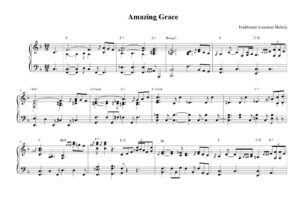 |
|
| Amazing Phrasing – Guitar 50 Ways to Improve Your Improvisational Skills (Guitar TABs Amazing Phrasing) (Tom Kolb) |
 |
Amazing Phrasing – Guitar 50 Ways to Improve Your Improvisational Skills (Guitar TABs Amazing Phrasing) (Tom Kolb) |
| Amelie Poulain – 6 pieces for piano – Yann Tiersen – Yann Tiersen |
 |
 |
| America (My Country ‘Tis of Thee Easy Piano Level 2 |
 |
|
| America Greatest Hits Piano Vocal Guitar chords |
 |
America Greatest Hits Piano Vocal Guitar chords |
| America Greatest Hits (piano & Guitar) |
 |
America greatest |
| America Horse With No Name Piano vocal | America Horse With No Name Piano vocal | |
| America’s Songs The Stories Behind The Songs Of Broadway, Hollywood, And Tin Pan Alley (Philip Furia, Michael Lasser) Book |
 |
|
| American Folk Songs For Guitar with Tablature |
 |
American Folk songs |
| American Folk Songs, My First Book of – Bergerac |
 |
|
| American Indian Melodies A. Farwell Op.11 (1901) |
 |
American Indian Melodies A. Farwell Op.11-min |
| American Pie (sheet music) |
 |
|
| American Popular Music (Book) by Larry Starr and Christopher Waterman |
 |
|
| Americana – Alegre, Magín (Guitarra) | Americana – Alegre, Magín (Guitarra) | |
| Amici Miei (Carlo Rustichelli) | ||
| Amor mio (Battisti) | ||
| Amore bello (Claudio Baglioni) | ||
| Amy Beach – Op.15 Four Sketches in Autumn |
 |
|
| Amy Grant – Breath Of Heaven | ||
| Amy MacDonald This Is The Life |
 |
AMY MACDONLAD |
| Amy Winehouse – Valerie |
 |
|
| Amy Winehouse – Valerie (sheet music) |
 |
|
| Amy Winehouse Amy Amy Amy |
 |
|
| Amy Winehouse Back To Black Songbook |
 |
Amy Winehouse Back To Black Songbook |
| Amy Winehouse Frank Songbook |
 |
Amy Winehouse Frank |
| Amy Winehouse I Heard Love Is Blind |
 |
|
| Amy Winehouse Just Friends |
 |
|
| Amy Winehouse Rehab |
 |
|
| Amy Winehouse You Know Im No Good |
 |
|
| An affair to remember (Harry Warren) | ||
| An American In Paris An George Gershwin (Concert Band)An American In Paris An George Gershwin (Concert Band) Arr. by Naohiro Iwai |
 |
|
| An American Tail – The Marketplace – James Horner | ||
| An Introduction To Bach Studies (eBook) |
 |
|
| An Irish Blessing (Musescore File).mscz | ||
| An Irish Blessing (SATB) Choral | An Irish Blessing (SATB) | |
| Analisis musical claves para entender e interpretar la Música (M. y A. Lorenzo) Español |
 |
|
| Analysis Of Tonal Music An Schenkerian Approach Allen Cadwallader and David Gagné (Book) |
 |
|
| Analyzing Bach Cantatas by Eric Chafe (eBook) |
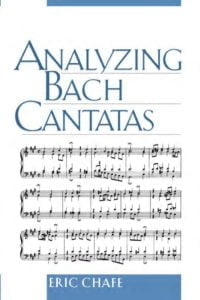 |
|
| Analyzing Schubert by Suzannah Clark (Cambridge Un. Press) (eBook) |
 |
|
| Anastacia Not That Kind Songbook |
 |
Anastacia songbook |
| Anastasia Once Upon A December arr. by John Brimhall (Piano Solo 2 Versions Easy And Intermediate) |
 |
|
| Anastasia Sheet Music songbook Piano & vocal |
 |
Anastasia Sheet Music songbook Piano & vocal |
| Ancora ancora ancora (Mina) | ||
| Ancora qui (Django Unchained) Elisa – Ennio Morricone | ||
| And the Waltz goes on (Anthony Hopkins) | ||
| Andante (from String Quartet op. 22) P. I. Tchaikovsky | ||
| Anderson Freire – So Voce Piano |
 |
|
| Andras Schiff – Music Comes Out Of Silence Book |
 |
|
| Andre Gagnon – L’air Du Soir |
 |
|
| Andre Gagnon – Le Reve De L’automne (sheet music Collection) |
 |
Andre Gagnon – Le Reve De L’automne (sheet music Collection) |
| Andre Gagnon – Les Jours Tranquilles | Andre Gagnon – Les Jours Tranquilles | |
| Andre Gagnon – Meguriai |
 |
|
| Andre Gagnon – Nelligan |
 |
|
| Andre Gagnon – Petite Nostalgie |
 |
|
| Andre Gagnon – Reves D’Automne | Andre Gagnon – Reves D’Automne | |
| Andre Gagnon – The Very Best Of Andre Gagnon (Sheet Music Songbook) |
 |
Andre Gagnon – The Very Best Of Andre Gagnon (Sheet Music Songbook) |
| Andre Gagnon Ciel D’Hiver |
 |
|
| Andre Gagnon Entre Le Boeuf et l’Ane Gris Musique Traditionelle |
 |
|
| André Gagnon L’air Du Soir |
 |
|
| Andre Gagnon Neiges |
 |
|
| André Gagnon Nelligan |
 |
|
| André Gagnon Origami |
 |
|
| André Gagnon Pensées Fugitives |
 |
|
| Andre Gagnon Pensées Fugitives |
 |
|
| André Gagnon Piano Solitude |
 |
Gagnon, André Piano Solitude |
| Andre Gagnon Prologue |
 |
|
| André Gagnon Selection Speciale de chansons (partitions musicales) |
 |
André Gagnon Selection Speciale de chansons (partitions musicales) |
| André Gagnon Un Piano Sur La Mer (Piano Solo Partition Sheet Music) | Gagnon André Un Piano Sur La Mer (Piano Solo Partition Sheet Music) | |
| Andre Popp Paul Mauriat Love Is Blue Piano Solo Arr. |
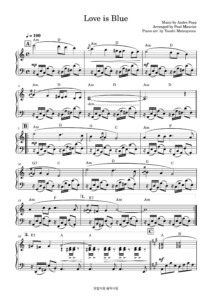 |
|
| André Previn – Play Like André Previn no. 1 |
 |
Andre Previn sheet music |
| Andre Previn – The Genius of (Piano Solos sheet music) |
 |
The genius of André Previn |
| Andre Rieu La Vie Est Belle (Songbook Collection As Performed By André Rieu) |
 |
Andre Rieu La Vie Est Belle (Songbook Collection As Performed By André Rieu) |
| Andrea Bocceli – Time To Say Goodbye | ||
| Andrea Boccelli – Time To Say Goodbye |
 |
|
| Andrea Bocelli Romanza songbook (Guitar & Voice) |
 |
Andrea Bocelli Romanza songbook |
| Andrea Bocelli – Anthology (songbook) |
 |
 |
| Andrea Bocelli – Con te partiro (Time to say Goodbye) Piano Solo arr | Andrea Bocelli – Con te partiro (Time to say Goodbye) Piano Solo | |
| Andrea Bocelli – Con te partiro (Time to say Goodbye) Piano Solo.mscz | ||
| Andrea Bocelli – The Best Of Songbook |
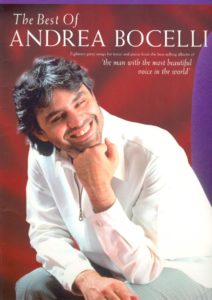 |
Andrea Bocelli best of |
| Andrea Bocelli Celine Dion The Prayer Easy Piano And Vocal By David Foster, Carole Bayer Sager, Alberto Testa And Tony Renis |
 |
|
| Andrea Bocelli Celine Dion – The Prayer – Easy Piano and Vocal by David Foster, Carole Bayer Sager, Alberto Testa and Tony Renis.mscz | ||
| Andrea Bocelli Cieli Di Toscana (Piano, guitar & Vocal) |
 |
Andrea Bocelli Cieli Di Toscana |
| Andrea Bocelli Sogno Songbook |
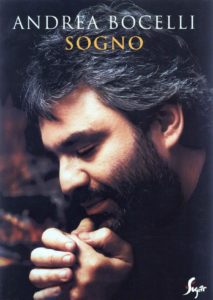 |
Andrea Bocelli sogno |
| Andrea Bocelli The Prayer |
 |
Alto Saxophone – Gigi Gryce (# A3, B2)…. Bass – Wilbur Ware (# A1 to B2)…. Drums – Art Blakey (#A3, B2), “Shadow” Wilson (#A1, A2, B1)…. Piano – Thelonious Monk…. Tenor Saxophone – Coleman Hawkins (# A3, B2), John Coltrane…. Trumpet – Ray Copeland (# A3, B2)…. ……………………………………………… A1 Ruby, My Dear 0:00 A2 Trinkle, Tinkle 6:22 A3 Off Minor 13:03 B1 Nutty 18:19 B2 Epistrophy 24:58 B3 Functional 28:09 ……………………………………………… Recorded – New York; 1957-58.
